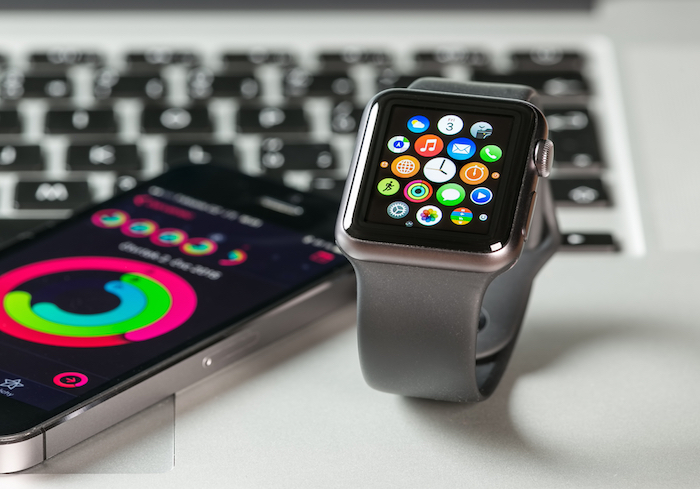
This was a mostly quiet week out of Cupertino as Apple managed to snag a lot of attention with what might go down in history as the smallest scale sale in Apple’s history.
Shoppers in select stores in the San Francisco Bay and Boston areas who are upgrading their iPhones will have the chance to toss an Apple Watch in there and save $50 on it.
If they are buying the Sport model, that is. The more expensive editions will remain at their original retail prices.
As discounting is rather rare over at Apple, even what amounts to at most a 16 percent discount — pitched toward a small fraction of Apple’s fan base in an almost comedically restricted manner — has been enough to set off a rampant wave of speculation about what this really means for the emerging wearable.
Were we cynics, we might suspect that Apple’s offering of the smallest possible discount was a rather unsubtle attempt to get the words “Apple Watch” into as many Monday morning tech space headlines as possible, but, of course, we’re not cynics.
Because maybe Apple is just really aiming to get a groundswell moving around a new category. Like wearables.
And the enterprise — an area which Apple’s SVP of Internet Software and Services, Eddy Cue, had a few comments on this week. At a conference, Cue spoke about how Apple’s overwhelming success with consumers gives them a natural path to “crossover” into the homespace/workspace.
And it is a space Cue says Apple is interested in exploring further.
Need to know more?
When Tim Cook took to Apple’s Q4 earnings call a little over a week ago, he spoke more about Apple’s enterprise push than many were expecting. But then, there has been a fair amount to talk about this year, with Apple signing high-profile partnerships with IBM and Cisco to:
a) Bring Apple products into their specific workplaces, particularly the iPad.
b) Create enterprise-focused products, particularly mobile, that work to marry Apple’s hardware to business software.
And in the last year that business has quietly gotten pretty successful, racking up $25 billion in enterprise technology sales.
Cue, speaking earlier this week, said that Apple tech, particularly the iPad, has always been a natural fit for the business world — as the tech’s earliest adopters were both techie consumers, and high-level managers and corporate executives.
Cue also noted that businesses are still really in the very early stages of adopting mobile. This is important, he notes. It is often questioned by analysts if Apple, despite its massive success as a consumer brand, can really hope to compete against players that are deemed much more valuable.
Cue also responded to the idea that Apple’s push into a new vertical is similar to the sort of unfocused, unmoored product creation that was endemic to the firm in the late ’80s and early ’90s during the non-Steve Jobs years.
Cue says no, and though Apple is massive, the reality is its engineering teams remain focused as a core, and that Apple’s vision is as clear as it is interconnected.
“We got a lot more way to go,” he said, but he remains confident they are well on the way.
Though initially billed as rolling out smoothly, the latest iterations of iOS 9 have reportedly been causing some difficulties for iPhone users.
It seems what Forbes is calling a “vicious cycle” has broken out. Over the last several weeks, the harder Apple tries to patch holes and fix bugs, the more new ones seem to turn up. The problem may just be speed itself — Apple has pushed three updates in four weeks — and as of iOS 9.1, things are still looking a bit shaky.
Even though 9.1’s change log reflects that 11 out of 13 new features are bug fixes, it seems they’ve introduced a pretty big one.
Touch ID doesn’t work anymore.
According to reports, just how badly not working it is can vary. It either suddenly can’t read the user’s print, begins working unpredictably or, in some cases, doesn’t register it is being touched at all. Hard resets and factory resets do not seem to fix the problem.
Apple Pay, of course, won’t work without Touch ID, meaning Apple Pay enthusiasts who upgraded to 9.1 may find themselves at a store with an iPhone that seems to have suddenly forgotten how to authenticate them.
Unfortunately, reverting to a previous OS is no longer an option.
Apple’s official comment on the bio-authentication issue is “no comment.”
However, given the pace of all the recent upgrades, it seems safe to assume that a bug fix will be up for grabs soon. We look forward to your suggestion on Twitter as to what the next thing to break will be. #pleasefixmyTouchID
So, going into next week, it looks like Apple is both looking ahead and behind. Ahead, to figure out how to crack the enterprise. Behind, to try to figure out how exactly to get Touch ID switched back on.